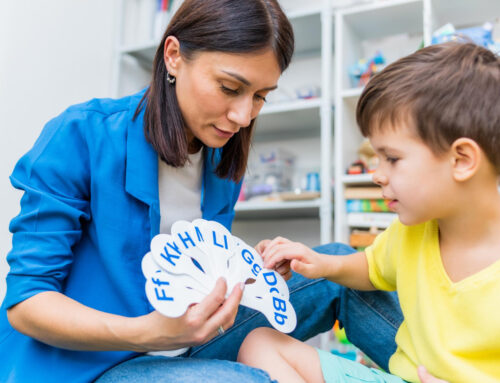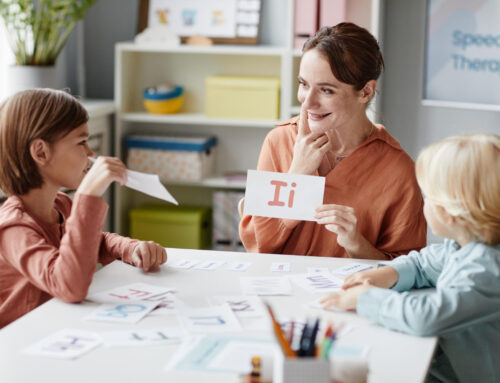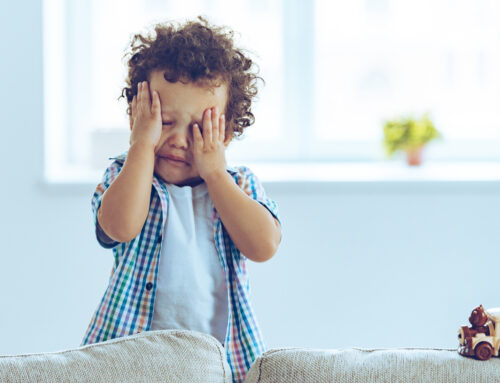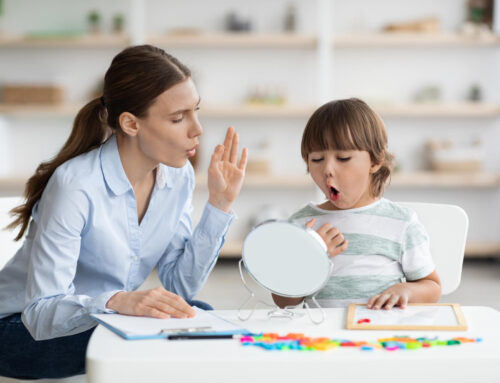Anxiety is a normal part of life, even for children. It can be a natural response to stressors like starting school, making new friends, or facing challenging situations. However, anxiety can significantly impact a child’s daily life & overall well-being when it becomes chronic or overwhelming.
As parents & caregivers, it’s crucial to understand children’s symptoms & causes of anxiety & explore effective interventions, like occupational therapy, to help them manage & overcome these challenges.
Understanding Anxiety In Children

Symptoms Of Anxiety In Children
Anxiety in children can manifest in various ways, often depending on their age & developmental stage. Common symptoms include:
- Excessive Worry: Children may constantly worry about everyday situations or future events.
- Irritability: Anxiety can make children irritable & easily frustrated, leading to changes in their behavior.
- Sleep Disturbances: Anxious children may have difficulty falling asleep or staying asleep, leading to fatigue & mood disturbances.
- Physical Symptoms: Anxiety can manifest as physical complaints, including stomachaches, headaches, or muscle tension.
- Avoidance: Children may avoid situations that trigger their anxiety, such as school, social gatherings, or specific activities.
- Poor Concentration: Anxiety can impair a child’s ability to concentrate & perform well in school.
- Social Withdrawal: Some anxious children may become socially isolated, making it challenging to build relationships with peers.
Common Causes Of Anxiety In Children
Understanding the potential causes of anxiety in children is essential for effective management. While each child’s experience is unique, some common factors include:
- Genetics: Anxiety disorders can run in families, suggesting a genetic predisposition.
- Environmental Stressors: Family conflicts, academic pressures, or traumatic events can trigger anxiety in children.
- Neurobiological Factors: Chemical imbalances in the brain, explicitly involving neurotransmitters like serotonin, can contribute to anxiety disorders.
- Learned Behavior: Children may learn anxious behaviors from their parents or caregivers, reinforcing the cycle of anxiety.
- Developmental Challenges: As children grow & face new challenges, anxiety may emerge as they navigate unfamiliar territory.
- Personality Traits: Some children may have a naturally anxious temperament, making them more prone to anxiety.
To help children effectively manage their anxiety, it’s essential to identify the underlying causes & tailor interventions accordingly.
How Occupational Therapy Can Help?
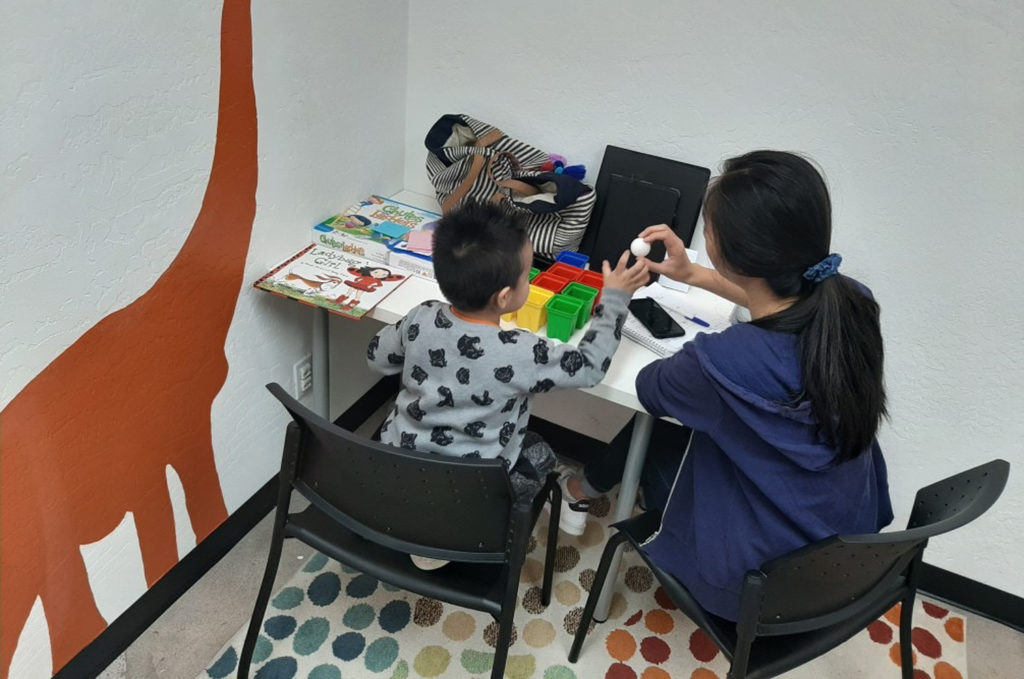
Occupational therapy is a valuable & evidence-based approach to help children struggling with anxiety. It focuses on improving a child’s ability to perform daily activities & engage in meaningful experiences while addressing specific challenges related to their mental health.
Here’s how occupational therapy can make a difference:
1. Sensory Integration
Sensory processing issues are often intertwined with anxiety in children. Occupational therapists can work on sensory integration, helping children better process & respond to sensory input. This can include activities like deep pressure touch, therapeutic brushing, & sensory diets to regulate a child’s nervous system & reduce anxiety-related sensory sensitivities.
2. Cognitive Abilities
Anxiety can affect a child’s cognitive abilities, including memory, problem-solving, & attention. Occupational therapy can help improve these cognitive skills through tailored interventions & exercises. This can enable children to better cope with their anxious thoughts & manage stress more effectively.
3. Social Interaction
Many anxious children struggle with social interactions, further exacerbating their anxiety. Occupational therapists use play-based interventions to help children build social skills, establish peer connections, & enhance self-esteem. By fostering positive social experiences, occupational therapy can reduce the isolation often associated with anxiety disorders.
4. Techniques & Methods
Occupational therapy employs various techniques & methods to address anxiety in children, including:
- Cognitive Behavioral Therapy (CBT): CBT helps children identify & challenge anxious thoughts & develop healthier coping strategies.
- Play-Based Approach: Play therapy provides a safe & supportive environment for children to express themselves, work through their emotions, & build resilience.
- Mindfulness & Relaxation Techniques: Occupational therapists can teach children relaxation techniques like deep breathing, meditation, or progressive muscle relaxation to manage anxiety effectively.
- Exposure Therapy: Gradual exposure to anxiety-provoking situations can help children confront their fears & reduce avoidance behaviors.
- Parental Involvement: Occupational therapists often involve parents in therapy to ensure continuity of care & provide tools for parents to support their anxious child at home.
Addressing Different Anxiety Disorders

Speech therapist teaching letter pronunciation to a young boy in a classroom
Anxiety disorders in children can manifest in various forms, each requiring a unique approach to therapy:
1. Generalized Anxiety Disorder (GAD)
Children with GAD may experience excessive worry & fear about various aspects of their lives, often with no specific trigger. Through techniques like CBT & relaxation training, occupational therapy can help these children manage their pervasive anxiety.
2. Social Anxiety Disorder
Children with social anxiety disorder fear social situations & may isolate themselves to avoid discomfort. Occupational therapists can employ play-based interventions & exposure therapy to improve their social skills & boost self-confidence.
3. Specific Phobias
Occupational therapy can help children with specific phobias confront & overcome their fears through exposure therapy & desensitization techniques, allowing them to participate in previously avoided activities.
4. Separation Anxiety Disorder
For children with separation anxiety, occupational therapy can work with the child & the parent to facilitate smoother transitions & build a sense of security & confidence.
The Importance Of Early Intervention

Young Downs Syndrome Couple Having Fun Baking In Kitchen At Home
Early intervention is crucial in addressing anxiety in children. Anxiety disorders can affect a child’s development & overall well-being. The more prolonged stress goes untreated, the more challenging it becomes to manage & the greater the potential for adverse consequences. Early intervention can prevent stress from becoming a long-term, debilitating condition.
Seeking help from qualified professionals, such as occupational therapists, parents, & caregivers, can provide children with the necessary tools to overcome their anxiety & thrive in all areas of their lives.
A Call To Action: Seek Help From Theracare

Portrait of man and girl with down syndrome swinging in park
If you notice signs of anxiety in your child, taking action & seeking professional help is essential. Theracare is a leading provider of occupational therapy services, specializing in helping children manage stress & develop the skills needed to lead fulfilling lives.
Don’t wait; contact Theracare Pediatric Services today to schedule an evaluation & start your child on the path to anxiety management & recovery.
In conclusion, anxiety in children is a common & treatable condition. By understanding the symptoms & causes of anxiety & exploring the benefits of occupational therapy, parents & caregivers can take proactive steps to help their children manage & overcome anxiety. With early intervention & the proper support, children can develop the tools they need to lead happy, healthy lives free from anxiety.

